Edible Wild Plants: 10 Herbs and Flowers for Cooking
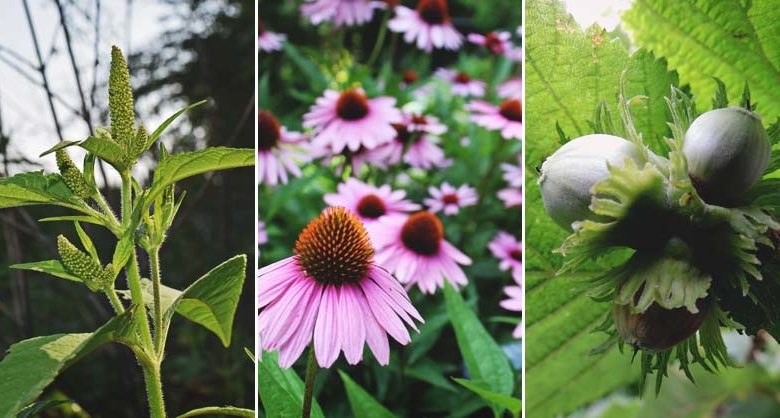
Today we will look at some examples of wild edible plants, such as medicinal herbs and flowering plants that can be eaten. These edible herbs, which can be grown in the garden alongside vegetables, are an original ingredient for cooking and also have other benefits.
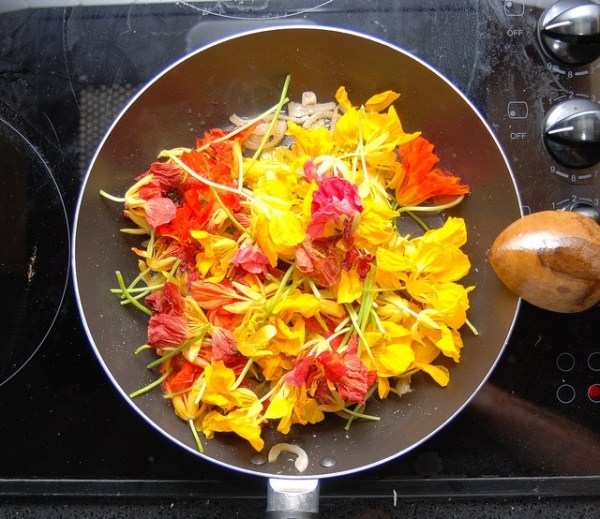
Benefits of Growing Wild Edible Plants and Flowering Plants in the Garden
As we will see later in the descriptions of the 10 wild edible plants, in addition to the culinary application, these plants have multiple uses and advantages for the organic garden, such as:
- Thanks to their high content of antioxidants, many wild edible plants have medicinal properties or are beneficial to health.
- They are usually easy to grow, since their «wild» condition makes them resistant and easily adapted to almost any climate and medium.
- They are perfect for the garden since, with their smell, they help to drive away pests from vegetables.
- They favor biodiversity (one of the key aspects of organic farming).
- The flowers attract pollinating insects such as bees, very beneficial for the garden.
10 Flowering Plants and Edible Wild Plants
Here are several examples of wild plants that are eaten and edible flowers that can be used in salads and other dishes.
1. Nasturtium (Tropaeolum majus)
They are plants with very showy orange flowers, which is why in some places this edible wild plant is known as «blood flower».
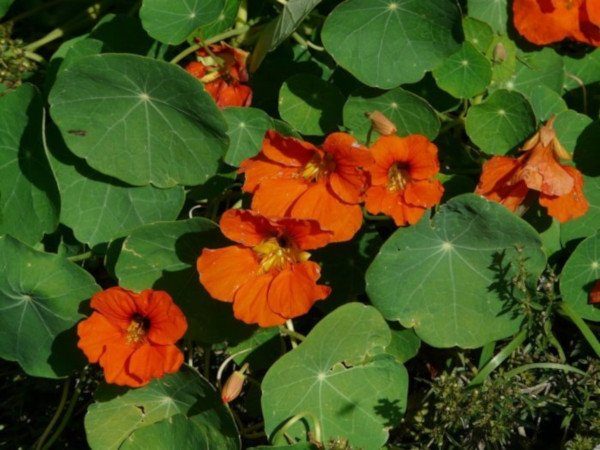
Its flowers and stems can be eaten raw in salads, or cooked in tortillas or grilled as a garnish. They have a somewhat spicy flavor reminiscent of watercress. The seeds are also edible, which preserved in vinegar can replace small pickles such as capers.
In addition, nasturtiums are very useful in organic gardens, they are used for biological pest control because their smell repels snails and slugs, bed bugs and aphids.
2. Calendula (Calendula officinalis)
It is a perennial plant that can last several years. It is one of the useful flowers in the garden because its yellow or orange flowers attract pollinators and beneficial insects such as ladybugs, predators of aphids.

It is also another of the most used wild edible plants, its flowers can be used in the kitchen as a substitute for saffron (as they give color and flavor), and they are also used raw in salads.
3. Borage (Borago officinalis)
These plants with blue, purple or white flowers can be easily grown in spring and summer.
Interesting because it is easy to grow and does not need too much care. In addition to making the garden look prettier and favoring pollination and biodiversity, it can be associated with tomatoes or pumpkins and helps enhance their flavour.
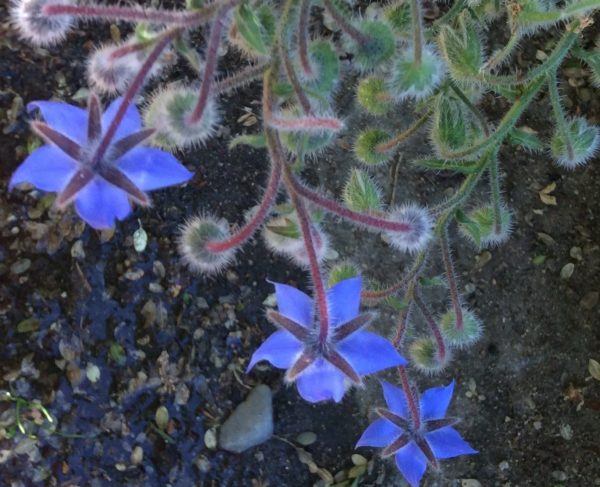
The leaves and stems of borage can be cooked, for example, in soups or scrambled with eggs (as is done with spinach or young garlic), but they can also be eaten raw in salads. The flowers are also eaten, they are often used to decorate desserts or, infused, to give a special touch to drinks.
In addition to a very special flavor, this plant has diuretic and anti-stress properties and provides vitamins and minerals.
4. Wild fruit hedges
Red fruit hedges such as blackberries, blueberries, blackberries, raspberries or currants will give a special touch to the orchard or garden and can last for many years.
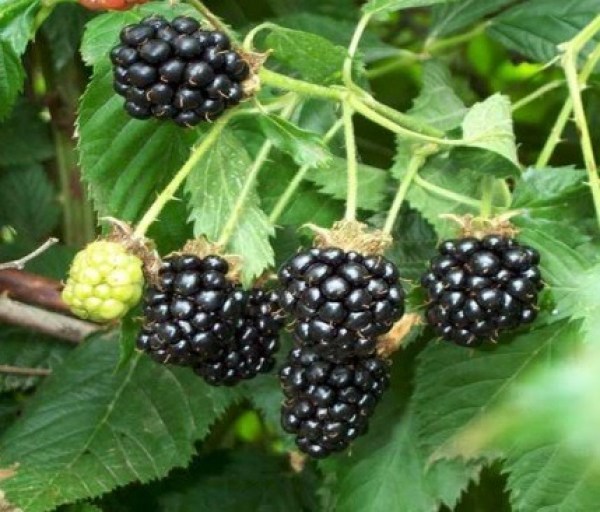
These wild fruits are perfect for making homemade jams or preserves, to decorate cakes and other desserts, and also to eat alone for dessert or as a snack (I love them mixed with natural yogurt).
Plus, these wild edible plants have plenty of benefits for organic gardens. We talked about it in the post Blackberries in the garden, why not grow wild fruits? , where you can find more information to learn how to grow them.
5. Wild rose (Rosa canina)
The wild rose bush is a shrub with edible flowers, from which you can also take advantage of its fruits, known as rose hips, which can be used to make jams and syrups and contain a large amount of Vitamin C.
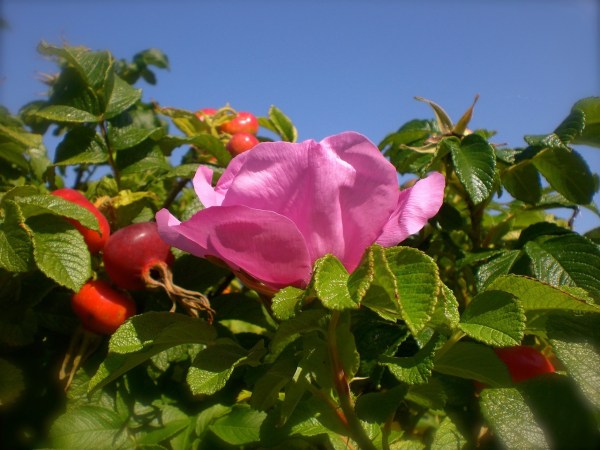
Caramelized rose petals are widely used as decoration in confectionery (also, in addition to decorating, they can be eaten). They are also used to flavor jams, jellies, sauces and even vinegar.
Rose vinegar (wild or cultivated) is an easy to make and delicious dressing that will give a very special touch to salads. You just have to let several clean rose petals with small incisions (so that they release the aroma well) macerate for 10 days in a tightly closed glass jar with wine or apple vinegar. After that time, the petals are removed with the help of a strainer and… that’s it!
6. Milk Thistle (Silybum marianum)
The use of milk thistle leaves as an ingredient in cooking is becoming more and more widespread. The leaves are the central and thick nerves of the leaves, which are consumed cooked.
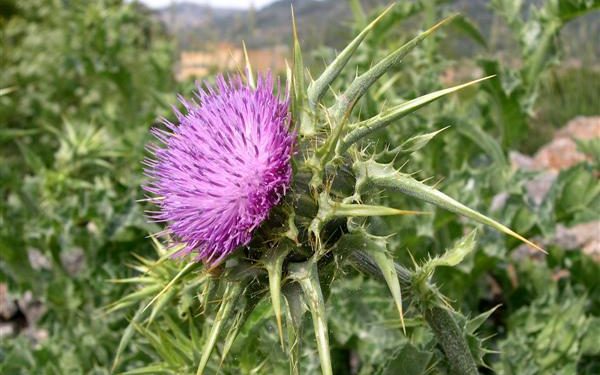
This type of thistle has important health benefits. It is used, for example, to naturally treat liver conditions such as cirrhosis or excess iron that can damage the liver. In this post about the Properties and benefits of milk thistle for health and beauty you can see some of its benefits.
7. Violet (Viola odorata)
From these beautiful flowering plants, you can take advantage of the raw leaves and flowers to complement and give a touch of color and special flavor to salads. In confectionery, the caramelized petals of the violet are used, which are a perfect and delicious complement to decorate cakes and other desserts.

These edible flowers can be used to make garnishes or to flavor liqueurs, while the leaves are also used to flavor soups, sorbets or juices, even in some places they are eaten fried.
8. Arugula (Eruca vesicaria)
Arugula has been considered a weed for decades, but now its use in cooking has spread and it has become one of the most common and well-known wild edible plants, especially for its use in salads.

In addition, arugula has medicinal properties: it helps purify the body and is used, for example, against constipation. It also contains very beneficial compounds such as antioxidants, vitamin C, A, K and others such as zeaxanthin and lutein.
Like most of these wild edible plants, it is easy to grow. If you want some tips and tricks to grow it at home, you can read the post Growing arugula in the garden.
9. Cat’s claw (Carpobrotus edulis)
Everything can be used from this plant. The very fleshy leaves can be eaten raw in salads, cooked or preserved in vinegar (as pickles). The fruits (well ripe, because if they are not too astringent) are a kind of figs that come out once the flower has fallen and are also edible.
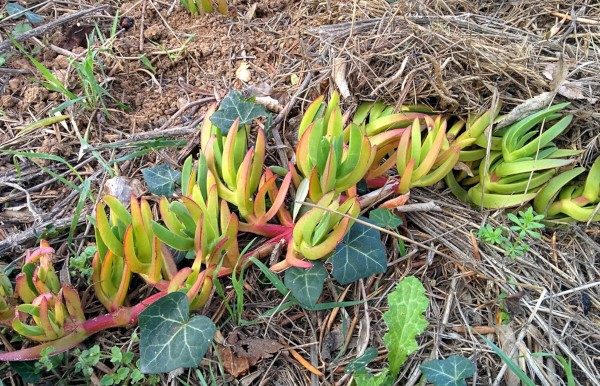
10. Sorrel (Rumex acetosa)
This is one of the most traditional edible wild plants, it has been used since ancient times. For salads, its fresh leaves are used, which have a very characteristic flavor similar to that of vinegar, which is why in several areas it is known as a vinaigrette or vinaigrette.
It is known for its medicinal uses, and is recommended as a natural remedy against anemia, as it is a good source of iron and vitamin C. However, it is not recommended for people with kidney problems as it can favor the formation of kidney stones.
The roots and seeds can also be used to make diuretic infusions and against skin infections.

So far today’s post, I hope you have found this list of edible wild plants and flowering plants for cooking useful ! As we have seen, they are very useful not only for their culinary use, but also for their benefits for the orchard and garden.
If you know other plants of this type that can be used in the kitchen or for the preparation of infusions, do not hesitate to make your contributions in the comment thread below!
For kitchen lovers, if you want to grow original plants, different from the typical garden vegetables, I leave you this link to another entry that I wrote about useful aromatic plants in the organic garden: Growing aromatic herbs for cooking. I hope it works for you!
References
- Lara-Cortés, E. et al., 2013. Nutritional content, functional properties and conservation of edible flowers. Review. Latin American Archives of Nutrition, vol. 63, no. 3, p. 197-208.
- Navarro González, I. et al., 2015. Nutritional Composition and Antioxidant Capacity in Edible Flowers: Characterization of Phenolic Compounds. International Journal of Molecular Sciences, vol. 16 (1), p. 805-822.
- Cordero, S. et al., 2017. Field Guide: Wild edible and medicinal plants of Chile and other parts of the world. Chilean Wood Corporation (CORMA). ISBN: 978-956-8398-10-1

![Photo of Pests and Diseases of Bananas: [Detection, Causes and Solutions]](https://www.complete-gardening.com/wp-content/uploads/2022/08/pests-and-diseases-of-bananas-detection-causes-and-solutions-340x220.jpg)
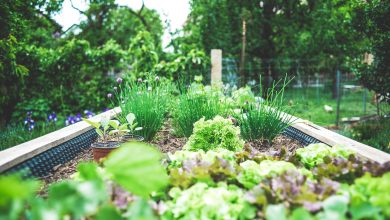

![Photo of Dimorfoteca: [Cultivation, Irrigation, Care, Pests and Diseases]](https://www.complete-gardening.com/wp-content/uploads/2022/08/dimorfoteca-cultivation-irrigation-care-pests-and-diseases-390x220.jpg)